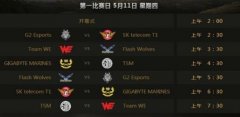七年级英语下册知识点总结
—es, there is. It’s n Bridge Street. 是的.,有。它在桥街上。
2. The pa phne is between the pst ffice and the librar. 付费电话在邮局与图书馆之间。
3. —Oh… where’s Center Street? 噢……中心大街在哪里?
—It’s nt t far fr here. 它离这儿不太远。
4. There is a restaurant in frnt f the pst ffice. 在邮局前面有一家餐馆。
5. G alng lng Street and it’s n the right. 沿着长街走,它在右边。
6. Turn right at the first crssing. 在第一个十字路口向右转。
7. I ften exercise at the par because I lve the clean air and sunshine.
我经常在公园锻炼因为我喜欢那里新鲜的空气和阳光。
8. When I read bs, tie ges quicl! 当我读书的时候,时光飞逝。
七年级下册英语知识点总结
英语作为必学科目之一,该如何学好英语一直是同学们所思考的问题,有什么方法呢。以下是由我为大家整理的“七年级下册英语知识点总结”,仅供参考,欢迎大家阅读。 七年级下册英语知识点总结 一. 动词be(is,am,are)的用法 我(I)用am, 你(you)用are,is跟着他(he)、她(she)、它(it)。单数名词用is,复数名词全用are。变否定,更容易,be后not加上去。变疑问,往前提,句末问号莫丢弃。还有一条须注意,句首大写莫忘记。 二. this,that和it用法 (1)this和that是指示代词,it是人称代词。 (2)距离说话人近的人或物用this, 距离说话人远的人或物用that。如: This is a flower. 这是一朵花。(近处) That is a tree. 那是一棵树。(远处) (3)放在一起的两样东西,先说this, 后说that。如: This is a pen. That is a pencil. 这是一支钢笔。那是一支铅笔。 (4)向别人介绍某人时说This is…, 不说That is…。如: This is Helen. Helen, this is Tom. 这是海伦。海伦,这是汤姆。 (5)This is 不能缩写, 而That is可以缩写。如: This is a bike. That’s a car. 这是一辆自行车。那是一辆轿车。 (6)打电话时,介绍自己用this, 询问对方用that。如: —Hello! Is that Miss Green? 喂,是格林小姐吗? —Yes, this is. Who’s that? 是的,我是,你是谁? 注意:虽然汉语中使用“我”和“你”,但英语中打电话时绝不可以说:I am…, Are you…?/Who are you? (7)在回答this或that作主语的疑问句时, 要用it代替this或that。如: ①—Is this a notebook? 这是笔记本吗? —Yes, it is. 是的,它是。 ②—What’s that? 那是什么? —It’s a kite. 是只风筝。 三. these和those用法 this, that, these和those是指示代词,these是this的复数形式,指时间、距离较近的或下面要提到的人或事;those是that的复数形式,指时间、距离较远或前面已经提到过的人或事物。 ①This is my bed. That is Lily’s bed. 这是我的床。那是莉莉的床。 ②These pictures are good. 那些画很好。 ③ Are those apple trees? 那些是苹果树吗? 在回答主语是these或those的疑问句时,通常用they代替these或those以避免重复。如: ④Are these/those your apples? 这些(那些)是你的苹果吗? Yes, they are. 是的,他们是。 四. 不定冠词a和an a和an都是不定冠词,表示一(个,支,本,块……)的意思,但不强调数量概念,而是强调类别,用来限定名词。a用在辅音音素开头的单数名词前,如:a pencil(一支铅笔),a book(一本书);an用在元音音素开头的名词前,如an eraser(一块橡皮)。如果名词前有修饰语,用a还是用an,则以该修饰语的第一音素决定用a还是用an。如: a clock 一座钟 an old clock 一座旧钟 a book 一本书 an English book 一本英语书 a nice apple 一个可爱的苹果 an apple 一个苹果 五. There be句型 (1)There be句型主要用以表达“某处(某时)有某人(某物)。”其基本结构为“There be+某物(某人)+某地(某时)”其中there是引导词,没有词义;主语是be后面的名词, be是谓语动词,在一般现在时中be只用is和are两种形式。 下面这首歌诀可帮你巧记there be句型结构: There be放句首,主语跟在后。地、时放句末,强调置前头。如: There is a book on the desk. 有时为了强调地点,也可把介词短语放在句首。如: On the desk there is a book. (2)There be句型中的be动词如何确定呢?请先看看下面这首歌诀: Be动词,有三个,am,is还有are。“There be”真特别,不留am只留俩,那就是is还有are。 要用is还是are,须看其后的名词是单数还是复数。若是单数或不可数名词用is,否则就用are。如: ①There is a tree behind the house. ②There is some water(水)in the bottle(瓶子). ③There are some pears in the box. (3)注意:如果“be”后的主语是由and连接的两个或两个以上的名词,那么be的形式要遵循“远亲不如近邻”的原则。也就是说,“be”的形式是由与它最近的那个名词来确定的。若那个名词是单数或不可数名词要用is,是复数就用are。如: ①There is a book and some pens on the floor. ②There are some pens and a book on the floor. 拓展阅读:学好英语的方法 把掌握音标作为学习英语的第一项任务 许多人的不标准口音,都是学习初期忽视音标、缺乏练习造成的,但对零基础的同学们来说,这正是一个开好头的绝佳机会。 但拥有标准的发音会大大增强他们的自信感和成就感,同时,掌握音标也意味着领悟一种更便捷的单词拼写方式,而不再依赖于死记硬背。 借助基础教材,记忆一些简单的单词和句子 在背单词的过程中,初学者往往会有两个误区:一是单词纯靠背诵记忆,二是词汇量越多越好。前者可以利用音标进行记忆,而后者的误区在于你会背的单词≠你会用的单词。 实际上零基础的同学,应该避免一上来就刻意去背单词、背课文,而是先掌握最基础、最常见的单词和简单句子。 许多复杂的单词是由基础词汇复合而成,复杂句也是由简单句组成的,因此,深度掌握核心词汇和句型,有利于后期词汇量的叠加和对语法的理解。
初一下册英语知识点总结归纳
对于英语这门科目,很多刚上初一的学生都感觉很迷茫,不清楚应该要学习哪些知识。下面是我为大家整理的关于初一下册英语知识点 总结 归纳,希望对您有所帮助。欢迎大家阅读参考学习! 初一下册英语知识点总结 可数名词变复数 可数名词变复数时,有规则变化和不规则变化两种。 1、规则变化: 1)一般情况直接在词尾加“-s ”,如:cake-cakes, bag-bags, day-days, face-faces, orange-oranges等; 2)以s, x, sh, ch结尾的词,要在词尾加“-es ”,如:bus-buses, watch-watches, box-boxes等; 3)以辅音字母加y结尾的词,变y为i再加“-es ”,如:baby-babies, country-countries, family-families等; 4)部分以f (e)结尾的词,变f (e)为“ves ”,如:knife-knives, half-halves等; 5)以o结尾的词,加“-s ”或“-es ”,如:zoo-zoos, photo-photos, tomato-tomatoes, potato-potatoes等。记忆口诀:除了“英雄”hero外,凡是能吃的,加“-es ”,不能吃的加“-s ”。 2、不规则变化: 1)改变单数名词中的元音字母:man-men, woman-women, foot-feet, tooth-teeth等; 2)单、复同形:sheep-sheep, Chinese-Chinese, Japanese-Japanese等; 3)其他形式:mouse-mice, child-children等。 初一下册英语知识重点 介词用法: 1)具体时间前介词用at。 He gets up at half past seven every day. 他每天七点半起床。 She goes to bed at eleven o’clock. 她十一点睡觉。 2)表示“在早上,在下午,在晚上”的 短语 中用介词in,且定冠词the不能省略;表示“在中午,在夜里”的短语中介词用at,不加冠词。 in the morning在早上,in the afternoon 在下午,in the evening 在晚上 at noon在中午,at night在夜里 3) 表示“在某天”、“在某天的上午、下午等”的短语用介词on。 What do you usually do on Monday morning? 星期一上午你通常做什么? Do you sometimes go out to eat on Friday evening? 有时你星期五晚上出去吃饭吗? He watches DVDs on Saturday night. 星期六晚上他看DVD。 Parents take children to parks on June 1. 六月一日,家长们带着孩子去公园。 4)在this, last, next, every等词前面既不加介词,也不用冠词。 What are you doing this afternoon? 今天下午你做什么? He visits his grandma every Friday. 他每个星期五都去看望祖母。 She is going to Shanghai next Monday. 她下个星期一去上海。 初一英语知识 (一)need和dare的用法 need和dare既可用作情态动词,也可用作实义动词。用作情态动词时,主要用于否定句和疑问句。用作实义动词时,可用于各种句式。 1.用作情态动词--Need I come? --Yes, you must. --我需要来吗? --需要。 You needn't telephone him now. 你现在不必打电话给他。 I don't think you need worry. 我想你不必发愁。 She dare not go out alone at night. 她晚上不敢一个人出去。 How dare you say I'm unfair? 你竟敢说我不公平? Not one of them dared mention this. 他们谁也不敢提这件事。 2.用作实义动词You don't need to do it yourself. 你不必亲自做这件事。 We need to tell them the news. 我们需要把这消息告诉他们。 The table needs painting (to be painted.). 桌子需要油漆一下。 We should dare to give our own opinion. 我们要敢于提出自己的观点。 He did not dare (to) look up. 他不敢抬头看。 I dare day he'll come again. 我想他会再来的。(I dare say…为固定习语) (二)情态动词后跟完完成这项工作的。 He isn't here. He must have missed the train. 他还未到,一定是没赶上火车。 Where can (could) he gone? 他能到那里去了呢? You may (might) have read about it. 你可能在报上已经读到这件事了。 You could (might) have been more careful. 你本来可以更细心的。 He needn't have worried it. 他本不必为此事担心。 There was a lot of fun at yesterday's party. You ought to have come, but why didn't you? 昨天的聚会非常有意思。你本应该来,为何不来呢? 相关 文章 : 1. 初一下册英语知识点汇总 2. 七年级英语下册语法重点知识点总结 3. 初一英语语法知识点总结归纳 4. 七年级英语下册重点短语归纳 5. 7年级下册英语重要知识点
初一下册英语知识点总结
新人教版初一下册英语知识点总结一 1.do one’s homework 做某人的作业 do housework 做家务 2.talk on the phone 在电话里交谈, talk about……谈论…… talk to(with)sb 和某人交谈 3.write a letter 写信 write a letter to sb 给某人写信 4.play with…… 和……一起玩 5.watch TV 看电视 TV show 电视节目 6.wait for sb/sth 等待某人/某物 7.some of…… ……中的一些 8.in the first photo 在第一张照片里(介词用in,序数词前面有the) in the last photo 在最后一张照片里 a photo of one’s family 某人的家庭照片 9.at the mall 在购物街 at/in the library 在图书室 at/in the pool 在游泳池 10.read a book = read books = do some reading看书\阅读 11.thanks for = thank you for 为某事而感谢(后接动词要用v-ing) 新人教版初一下册英语知识点总结二 1. 他正在干什么? What is he doing? 他正在吃饭。He is eating dinner. 他正在哪里吃饭?Where is he eating dinner他正在家里吃饭。He is eating dinner at home. 2. 你想什么时候去?When do you want to go? 让我们六点钟去吧。Let’s go at six o’clock. 3. 他正在等什么? What is he waiting for? 他正在等公交车。 He is waiting for a bus. 4. 他们正在和谁说话? Who are they talking with? 他们正在和Miss Wu说话。They are talking with Miss Wu. 5. 你们正在谈论什么? What are you talking about? 我们正在谈论天气。We are talking about the weather. 6. 他们都正在去上学。They are all going to school. 7.这儿是一些我的照片。Here are some of my photos. 这儿是一些肉。 Here is some of meat. (some of meat不可数,故用is) 8.谢谢你帮我买这本书。 Thank you for helping me buy this book. 9.family 家;家庭。强调“整体”,是单数;强调“成员”时,是复数。 His family has a shower. 他们家有一个淋浴。 His family are watching TV. 他全家在看电视。 新人教版初一下册英语知识点总结三 1 want to do sth 想要作某事 2 give sb sth = give sth to sb 给某人某物 / 把某物给某人 3 help sb do sth 帮助某人作某事 Eg: I want to help my mother do some housework at home. 4 help sb with sth 帮助某人谋事 Eg: I want to help my mother with some housework at home 5 in the day 在白天 6 at night 在晚上 7 talk with/ to sb 和----谈话 8 be busy doing sth 忙于做某事 Eg: He is busy listening to the teacher. 9 in a hospital 在医院 10 work/ study hard 努力工 11 Evening Newspaper 晚报 新人教版初一下册英语知识点总结四 1 询问职业的特殊疑问词是what; 有三种主要句式 ① What + is / are + sb? Eg. What is your mother? ② Whhat + does/ do + sb + do? Eg. What does his brother do? ③ What + is/ are + 名词所有格/ 形容词性物主代词 + job? Eg . what is your job? 2 People give me their money or get their money from me. 3 Sometimes I work in the day and sometimes at night. 4 I like talking to people. 5 I work late. I’m very busy when people go out to dinners. 6 Where does your sister work? 7 then we have a job for you as a waiter. 8 Do you want to work for a magazine? Then come and work for us as a reporter. 9 Do you like to work evenings and weekends? 10 We are an international school for children of 5-12.




